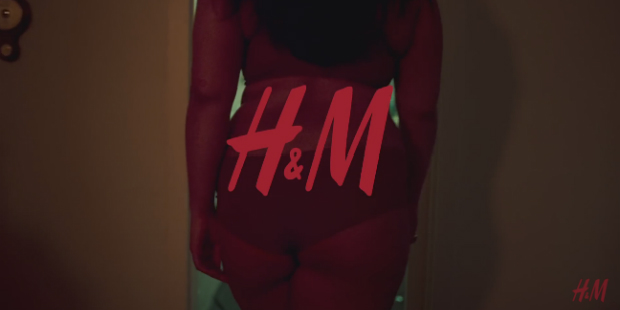Culture Jam
by KaitlynGuzman
The Original Ad:

The Breakdown:
In September this year H&M came out with a new ad campaign called “She’s a Lady”. The name originates from the 1970’s song sang by Tom Jones which H&M remade with the artist Jillian Hervey. In an interview Jillian says due to the time period the original message of this song was to express women’s independence from men. But today, Jillian says the message is to “redefine expectations about people based on their sex and class.” In the advertisement H&M displays images of women of all sizes, body types, skin colors and ages. In a short video H&M posted for this ad campaign they show a scene of a woman eating french fries and lifting her arms to show her underarm hair. This image is striking because it is showing a woman breaking down boundaries that many women in today’s society feels they must abide by to be accepted. Especially for a clothing company, fashion models tend to have a certain body type and image that creates an unrealistic expectation of beauty. So, this advertisement’s feministic edge is trying to shatter the idea that there is only one type of women and one type of beauty.
Aside from this message H&M is trying to sell their fall clothing line. All the women in this ad are wearing H&M’s new collection and by showing all different types of women wearing their clothes it can attract different types of consumers. Also, by taking this stance H&M can attain consumers who want to support a company that defends women’s empowerment. But, at the end of the day H&M is still a business trying to sell clothes and this is an advertisement promoting the brand.
Although commentators have given this ad appraisal for its feminist notion it has been implemented in a strategic time frame. Just this summer H&M faced some heavy criticism about sweatshop labor in Cambodia. These Cambodian sweatshops where H&M’s clothes are made are filled with women workers who allegedly have been getting fired due to pregnancy. Is the new ad campaign just a distraction from negative posts in the media about H&M mistreating women workers?
Culture Jammed Ad:

Jamming Philosophy:
This “jammed” version of the H&M advertisement in the “She’s a Lady” video shows a picture of the Cambodian sweatshop workers next the original ad. It seems that H&M is advocating for the empowerment of women but not the women who make their clothes over seas. For H&M to take a feministic stance and then proceed to use sweatshops that mistreat women seems contradictory. This jammed version of H&M’s advertisement is meant to challenge the idea that they are advocating for women of different body types, gender identities and social classes but not the women who work in the sweatshops where the clothes are made. H&M is a company that stands by their ability to have trendy clothing at an affordable price. The reason they are able to sustain their business model is because of these women who work in a country where the labor is cheap and the labor laws are structured differently than more developed countries.
Research was done in H&M’s factories in India and Cambodia that surveyed the women working there and the findings were eye opening. The majority of women said termination due to pregnancy was common and sexual harassment was prevalent. There are international standards H&M is allegedly neglecting and if they are taking a platform that advocates for women why do they support these unjust factory methods? Do the women in their factories not deserve the same courtesy as the women they claim to be fighting for?
This ad campaign has been implemented just months after H&M’s maltreatment of these factory workers was brought to light. If they want to take a stance for women and fight for women’s rights they should do so for all women. It is understood that it can be easy to neglect social issues that are over seas because it can be hard to relate when you are not directly affected or the issues are not right in front of you. But, that does not mean these social issues are not happening or any less important. If H&M really wanted to fight for women’s empowerment they should fight for all women across the board, which includes the women in their garment facilities.